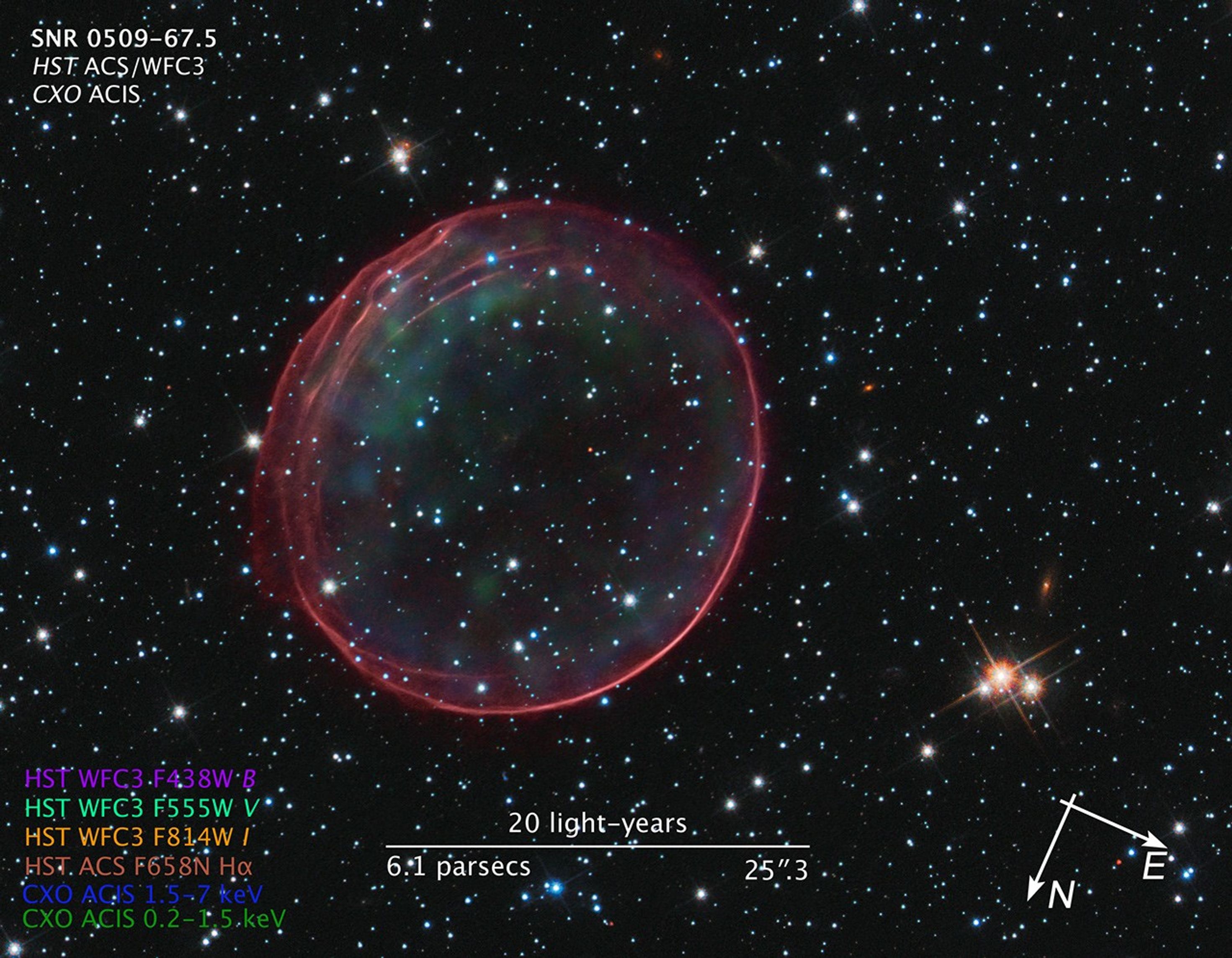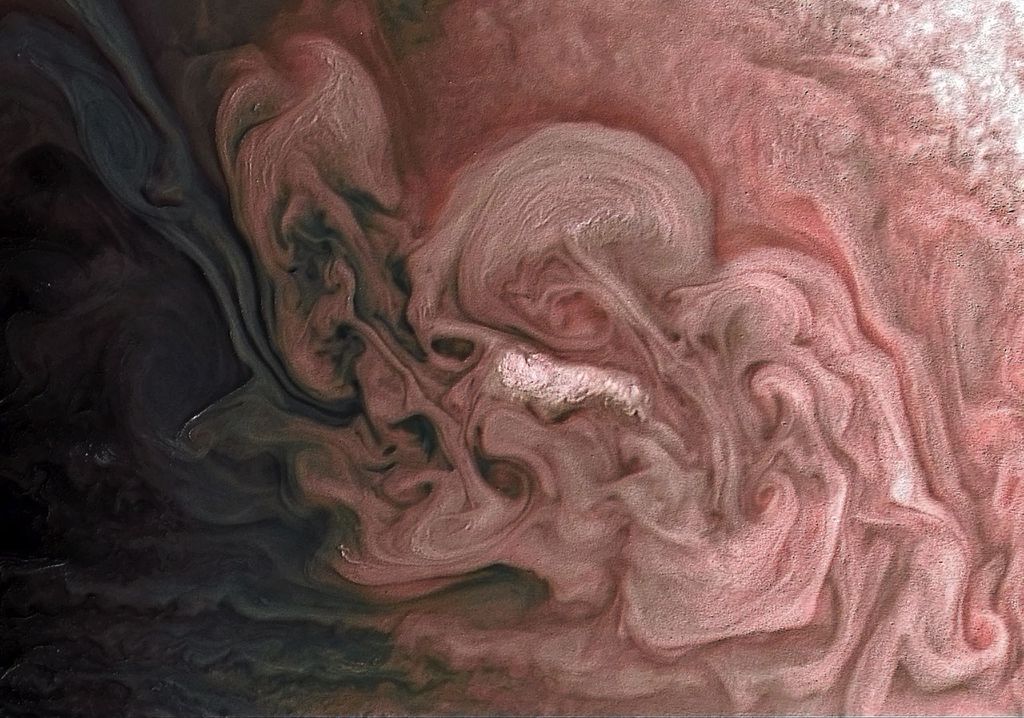1 min read
Compass and Scale Image of SNR 0509

Image of supernova remnant 0509-67.5, with compass arrows, scale bar, and color key for reference.
The north and east compass arrows show the orientation of the image on the sky. Note that the relationship between north and east on the sky (as seen from below) is flipped relative to direction arrows on a map of the ground (as seen from above).
The color key shows which filters from Hubble's ACS (Advanced Camera for Surveys) and WFC3 (Wide Field Camera 3) instruments were used when collecting the light.
About the Object
- R.A. PositionR.A. PositionRight ascension – analogous to longitude – is one component of an object's position.05h 9m 31.69s
- Dec. PositionDec. PositionDeclination – analogous to latitude – is one component of an object's position.-67° 31' 18.0"
- ConstellationConstellationOne of 88 recognized regions of the celestial sphere in which the object appears.Dorado
- DistanceDistanceThe physical distance from Earth to the astronomical object. Distances within our solar system are usually measured in Astronomical Units (AU). Distances between stars are usually measured in light-years. Interstellar distances can also be measured in parsecs.170,000 light-years (52,000 parsecs)
About the Data
- Data DescriptionData DescriptionProposal: A description of the observations, their scientific justification, and the links to the data available in the science archive.
Science Team: The astronomers who planned the observations and analyzed the data. "PI" refers to the Principal Investigator.The optical image was created from Hubble data from proposals: 11015: J. Hughes, J. Warren, and L. Hovey (Rutgers University), C. Badenes (Weizmann Institute of Science, Israel), C. Smith (NOAO/CTIO), J. Vink (Space Research Organization, Netherlands), and P. Ghavamian (STScI); 12326: K. Noll, Z. Levay, M. Livio, H. Bond, C. Christian, L. Frattare, M. Mutchler, and T. Borders (Hubble Heritage Team/STScI). The X-ray data are from the CXO proposals: 776, 7635, 8554: NASA/CXC/SAO/ J.Hughes et al. - InstrumentInstrumentThe science instrument used to produce the data.HST>ACS/WFC, HST>WFC3/UVISl, and Chandra>ACIS
- FiltersFiltersThe camera filters that were used in the science observations.HST: F475W (g), F555W (V), F658N (H-alpha+[N II]), and F814W (I) CXO: 0.2-1.5 keV and 1.5-7 keV
- Object NameObject NameA name or catalog number that astronomers use to identify an astronomical object.SNR 0509-67.5
- Object DescriptionObject DescriptionThe type of astronomical object.Supernova Remnant
- Release DateJanuary 11, 2012
- Science ReleaseHubble Solves Mystery on Source of Supernova in Nearby Galaxy
- Credit

This image is a composite of separate exposures acquired by the WFC3 and ACS instruments on HST, and the ACIS instrument on the Chandra X-ray Observatory. Several filters were used to sample broad and narrow wavelength ranges along with X-ray energy frequencies. The color results from assigning different hues (colors) to each monochromatic (grayscale) image associated with an individual filter. In this case, the assigned colors are: Orange: F814W (I) Red: F658N (H-alpha+[N II]) Light green: F555W (V) Purple: F475W (g) Green: 0.2-1.5 keV Blue: 1.5-7 keV

Related Images & Videos

Optical and X-ray Composite Image of SNR 0509-67.5
This image of supernova remnant 0509-67.5 was made by combining data from two of NASA's Great Observatories. Optical data of SNR 0509-67.5 and its accompanying star field, taken with the Hubble Space Telescope, are composited with X-ray images from the Chandra X-ray Observatory....
Share
Details
Claire Andreoli
NASA’s Goddard Space Flight Center
Greenbelt, Maryland
claire.andreoli@nasa.gov






























